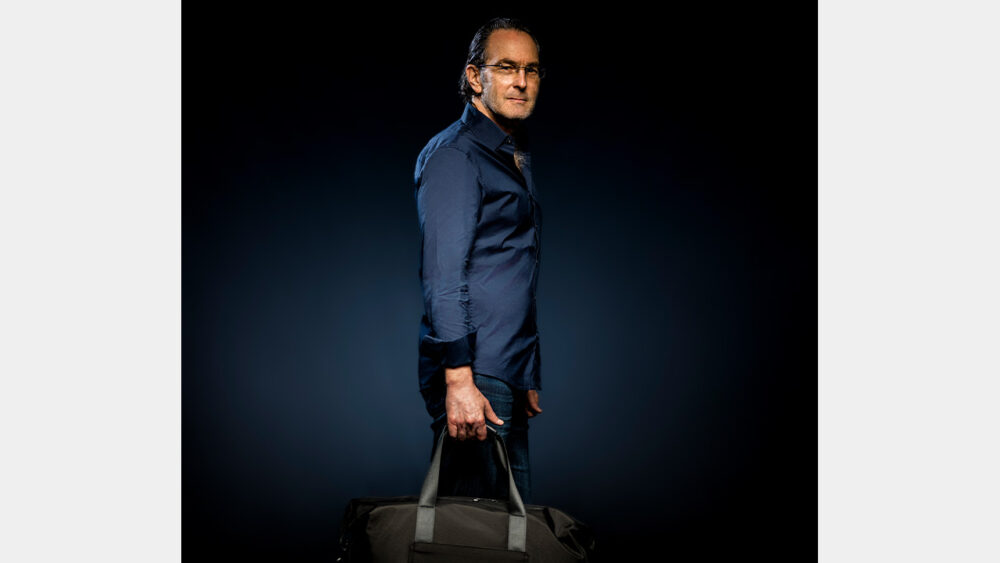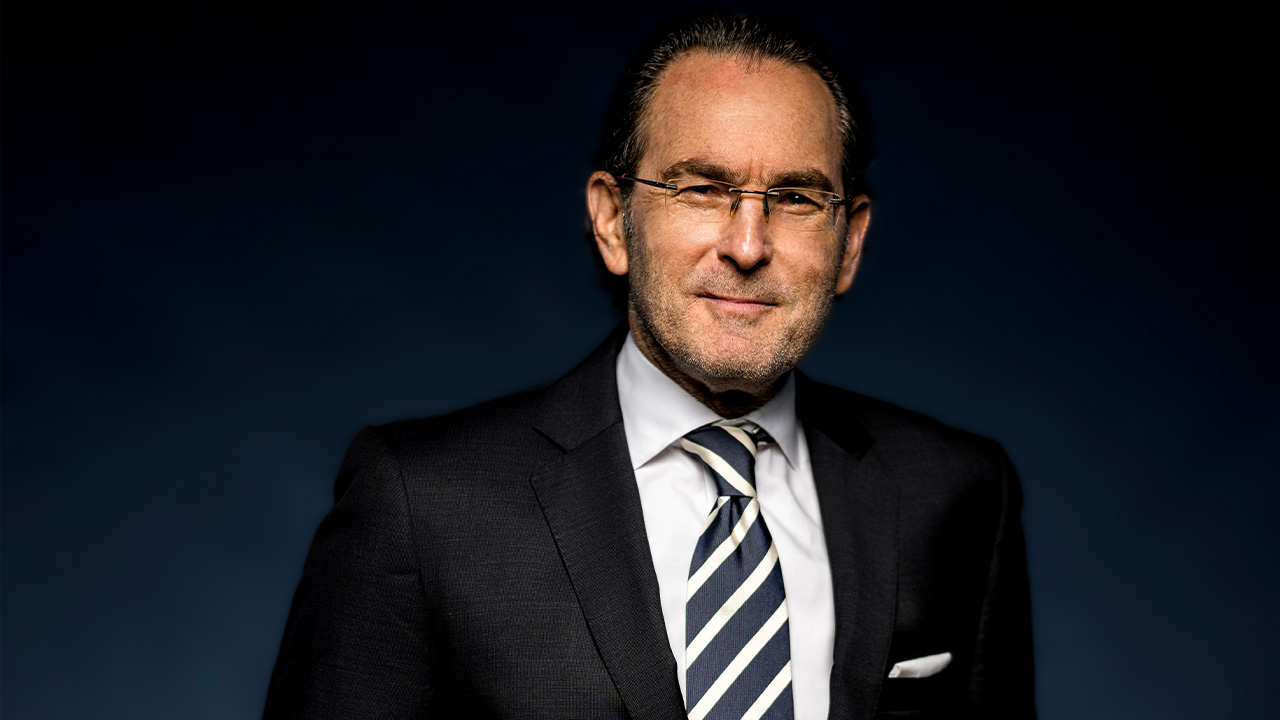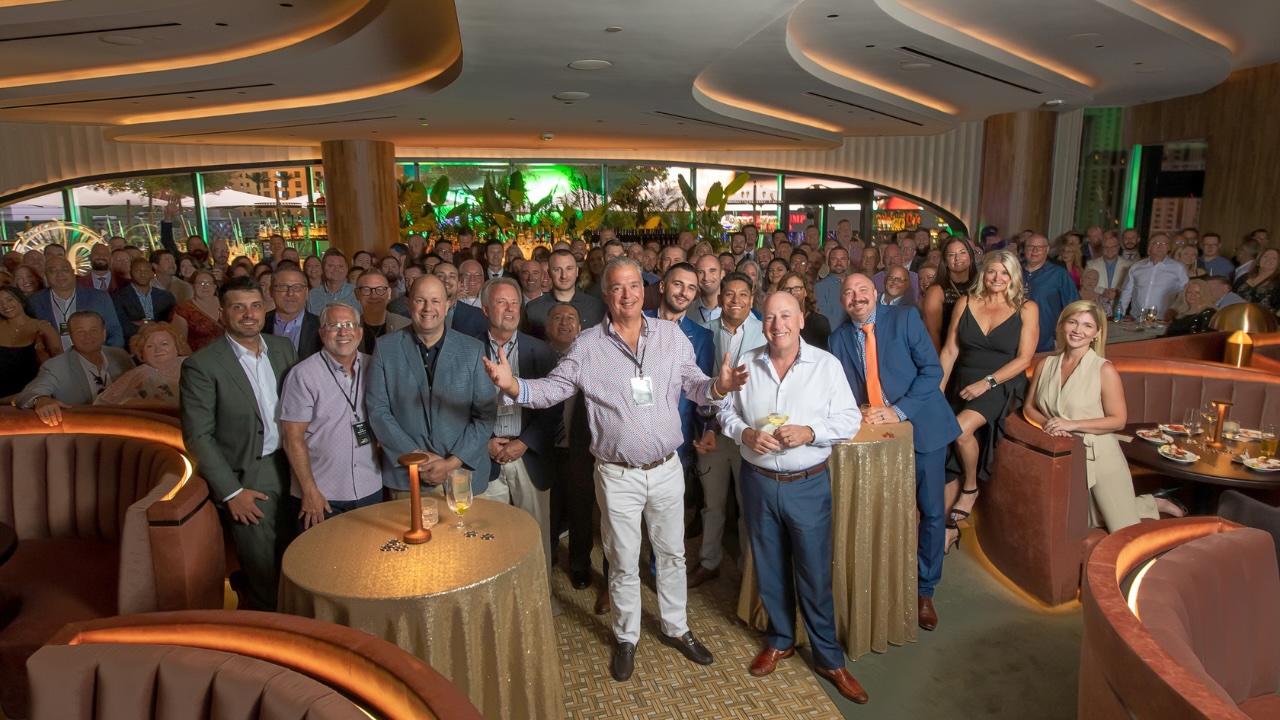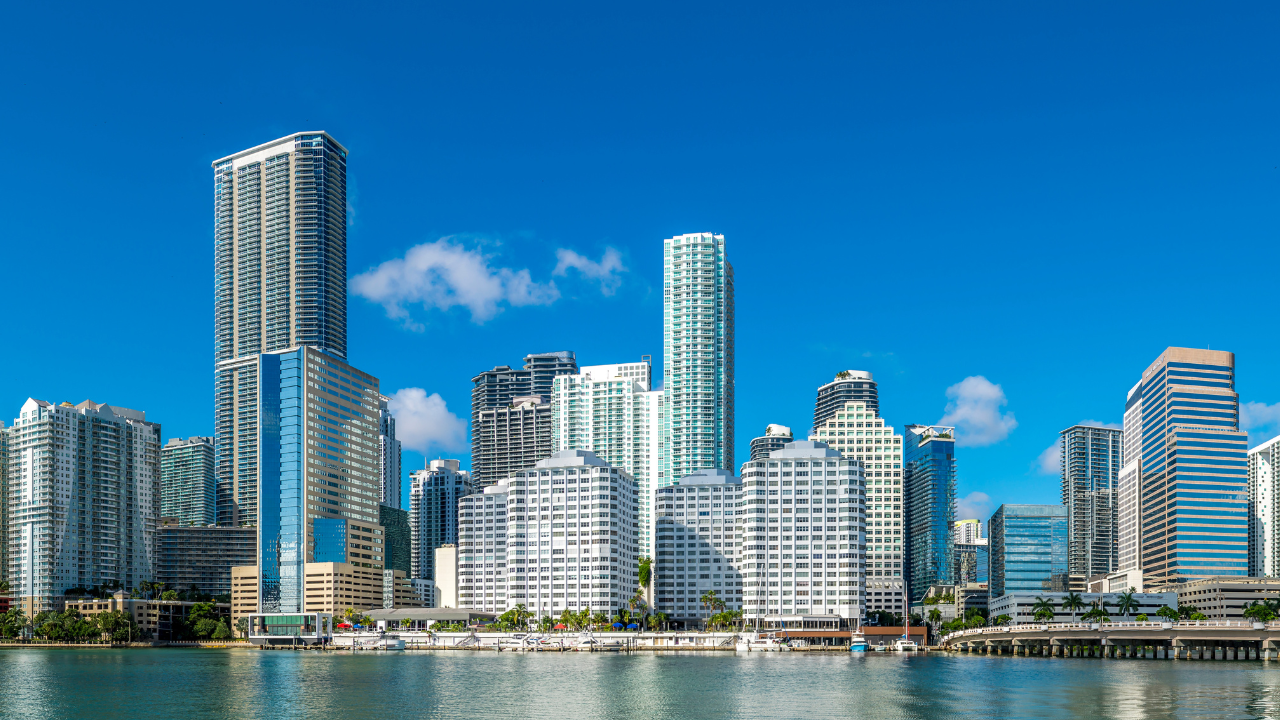Leo Ghitis, the owner of Nayara Resorts, immediately tells me two things: “As a longtime resident of Miami, I’ve always been a loyal reader of your magazine” (I enjoyed that one); and “I am a boring businessperson who is trying to do good.” It’s that second sentence that seems only half-true. A man who came to exotic hospitality late in life, only to develop nature-focused resorts in Costa Rica, Chile and Panama—complete with overwater villas, tented camps and treehouses—is anything but boring.
Born in Cali, Colombia, South America, Ghitis moved to the United States at 17; he studied engineering at Georgia Tech and earned his MBA at Harvard Business School. In time, his real estate development career segued into providing indelible rainforest experiences for thoughtful high-net-worth travelers. Ghitis spoke to SFBW about luxury and sustainability, his enthusiasm for his latest resort, Nayara Bocas del Toro in Panama, and a particularly meaningful wildlife encounter.

At SFBW, we are especially interested in midcareer pivots. What was yours?
I am a real estate developer by background. I was a partner at Trammell Crow Company—at that point, it was the largest private real estate developer in the U.S. Later I started my own real estate company based in South Florida. During the Great Recession, I found myself not very busy, so I became involved with a small limited-service three-star hotel in the Arenal area of Costa Rica. There were 24 rooms, approximately 25 employees, and rates ranged from $90 to $120 per night. The name of the hotel then and now is Nayara. Now we have three hotels in Costa Rica with over 500 employees and our rates at our two newest properties range between $800 and $11,000 per night. Three years ago, we added two wonderful hotels in the Atacama Desert and Easter island in Chile. We have four other hotels under development. All of them are five-star hotels and all of them are located in unique and extraordinary locations.
Were there any challenges you faced when getting into the resort industry?
When I got into the resort industry, I didn’t know anything about the business, which at that point seemed like a tremendous competitive disadvantage, but now looking at it in retrospect I think it gave me the flexibility to try a different way of running hotels.
How does philanthropy factor into Nayara Resorts?
Our underlying philosophy and mission at Nayara is to go beyond sustainability towards regenerative travel—that means not just slowing environmental impacts but actively restoring nature to its previous glory through reforestation projects and investment in the local community. We continue to be environmentally and socially conscious, with a renewed focus on energizing and enhancing destinations for generations to come. This philosophy and mission is exemplified not only by the way we take care our natural environment, but also by the way we care for our staff and the communities we operate in. We are involved with our local institutions and local charitable organizations; we encourage our guests to visit these institutions and to get involved supporting them financially on a continued basis.
You’ve long enjoyed a substantial footprint in Costa Rica, with the Gardens and the Springs in Arenal National Park. Why did you decide to bring the tented camp concept to Arenal?
As a child I used to go camping with my father. Obviously, that was a totally different experience, but those memories gave me a lot of the impetus to develop a tented camp that would combine those feelings of being totally immersed in nature but with the unpretentious luxury that Nayara is known for.
But guests have access to all three?
We have a fairly large property in Arenal National Park, and we’ve built three hotels that are connected by pedestrian trails and hanging bridges.
So, if you stay in one you can get the benefit of the facilities of all of them?
Yes, but the only exception is Nayara Springs, which is adults only—over the age of 16. Both Nayara Tented Camp and Nayara Gardens are family-friendly properties.
Do you think the pandemic has changed the travel industry in ways that will endure?
I think the pandemic has changed perhaps forever what a large segment of the traveling population is looking for and we are fortunate to offer that—including open air restaurants, freestanding villas, in many cases with their own private pools. Guests at our hotels have always been able to make the decision to have privacy and maintain physical distance if they so wish.
What other hospitality brands to you admire and why?
Singita [based in South Africa], mainly because of its sustainability practices.
What made you add Alto Atacama and Hangaroa in Chile—your first properties outside of Costa Rica—to the portfolio?
Several years ago, I got to know the family that owns and the management team that operates both hotels and found that we share the same philosophy and objectives about social responsibility and sustainability. It was also a happy coincidence that these two hotels have a lot in common with our hotels in Costa Rica, as both of them are in unique and extraordinary locations. Both are beautiful properties with terrific staffs and management teams.
How would you define the target traveler to both?
There is a common trait among travelers who stay at our hotels: intellectual curiosity. Obviously, they are looking to enjoy their holidays and be pampered by our chefs and spa therapists, but fundamentally they want to learn about our countries and local communities. They are interested in and share our passion to give back to the community and to make the world a better place. They come because of the tours and experiences that we offer and the opportunity to see our vegetation and wildlife and, in general, experience nature in all its glory.
I received news earlier this year about your Nayara Bocas del Toro property in Panama. You’ve added a new treehouse—I love that. From the beginning of my travel writing career, I’ve experienced every prestigious city hotel from Los Angeles and New York to Paris and Rome, but I also find the rustic luxury segment magical. Let me hear from you about your decision to develop these kinds of properties.
Nayara is all about the fact that luxury and sustainability are not mutually exclusive. Actually, I feel that nowadays luxury has incorporated sustainability, and that’s what Nayara Bocas del Toro is all about. It’s a private island that is 100% sustainable. All the power comes from solar, the water that we use is collected from the rain, and we are also involved in projects to restore the coral reef. You’ve probably seen on our website that we have overwater villas, and we felt that in order to round out the experience, we wanted something a little different; we felt that treehouses provide that immersion in the forest, in nature. So, what a lot of guests are doing now is they are combining both. So, they come to the overwater villas—some of the overwater villas have glass floors so you can actually see what’s happening in the sea—and then a lot of guests spend a few days in the tree houses to round out the experience.
In order to make an overwater bungalow feasible, the bay has to be protected and calm, and there aren’t that many places in the world where you can find that. French Polynesia and the Maldives come to mind. What are the conditions that allow you to do this and make it work, with weather and water conditions?
You absolutely hit the nail on the head. There are very few places on the planet where you can do that. I don’t know if you’re aware of this, but two-thirds to three-quarters of all coral reefs around the planet are in danger of extinction, and Panama has done a great job in protecting its huge coral reef. Beyond that, there is an archipelago of little islands that surround the property, and all of that protects the area so the waters around Bocas del Toro are very calm. Most of the time, the water is basically like a lake.
How many units are there in total?
We have 16 overwater bungalows, we have three tree houses and we are building additional tree houses.
How are modern amenities, like wifi? Sometimes people hear about a remote resort and worry about connectivity.
It’s exactly what I was saying from the beginning. Our philosophy is that you can have that luxury and sustainability. The accommodations are completely luxurious, with wifi and air conditioning, but it’s all powered by solar panels.
I’m not a fan of the expression of the phrase “bucket list”—it brings to mind a checklist before you die. There’s something cold and a little morbid about that. I prefer to say that everyone needs to experience an overwater accommodation at some point, because it’s like nothing else.
It’s an incredible experience. When you think about it, people in this hemisphere, when they want to experience overwater villas or bungalows, have to go to the Maldives or French Polynesia, as you’ve mentioned. But I’m not aware of an experience like that in this hemisphere, and that’s what we offer. I’m an early riser, so I get up in the morning and just jump from the bungalow into the water. The amount of fish and wildlife that you see in the ocean is incredible.
What’s the depth once you jump in? As you can probably tell, I’m a swimmer so I’m getting into the minutia.
Probably 10 to 20 feet—you can see the bottom and it’s just gorgeous. It’s completely safe, so you can swim anywhere you want to go, and most of the villas overwater villas even have their own private pools.
That’s why it’s so hard to pull yourself away from the property. But what if you want to explore?
We have a fleet of little boats and each of our captains know the area really well, and they pull up to each villa. I’ve traveled all over the world but what I have not seen anywhere else is within 25 minutes, 30 minutes from Nayara Bocas del Toro, there are a bunch of little islands that have never been inhabited. They’re five minutes from each other and each island is completely different—you can swim off one and surf off another—but one thing that they have in common is they are all pristine, absolutely gorgeous, never having been inhabited, and the wildlife is off the charts.
I’ve always felt that low-density and privacy equal luxury—freestanding accommodations where you don’t share walls. Your brand seems to epitomize that.
We do not have properties that are midrise with several floors: We don’t, and we never will because we are about immersion in nature. All our properties are boutique hotels, and you always have your own villa. The great majority come with their own plunge pools or hot tubs or Jacuzzis. They always have private outdoor areas because as nice as the accommodations are, we want people to enjoy the outdoors. Our development is very low impact, very low footprint, so wherever you are, you are surrounded by gardens, by forests, by trees.
Can you share a memory of a time you really made a difference in the environment through these resorts?
Yes, there’s a project that is really close to me. About seven years ago we bought a small mountain at Arenal National Park. It had been decimated, totally destroyed by cattle ranchers, then it became a dairy. I used to go up on that mountain and I wanted to cry because there was absolutely nothing—I mean no butterflies, no birds. We made the decision that we wanted to bring back the rainforest, because before it was destroyed, it was a rainforest. It’s a project that took seven years. I know that we planted over 30,000 plants and trees. The people who work with me tell me that it’s many more than that; in all candor, I think we lost count because the project was so big. When you cut down trees you create a huge erosion problem, so when it rained, this mountain would become a river of mud, and nothing would survive. So, the first thing we had to do was stop erosion, so we brought thousands and thousands of volcanic boulders so we would stop the erosion. Once we did that, we were able to start planting trees and if you look at the website now, you will see that it’s not a mature rainforest yet—but we are getting there. Why am I telling you this story? When we opened the Tented Camp, I stayed at one of the tents, I was in the private plunge pool, which are all fed by the mineral hot springs that flow from the Arenal volcano, and right in front of me there was a sloth, and a few minutes later a toucan landed. I said to myself, Oh my God, seven years ago there was not a bird here—there was nothing—and this moment and what it represented made all the work so worthwhile.
By Drew Limsky
Photos by Nick Garcia














